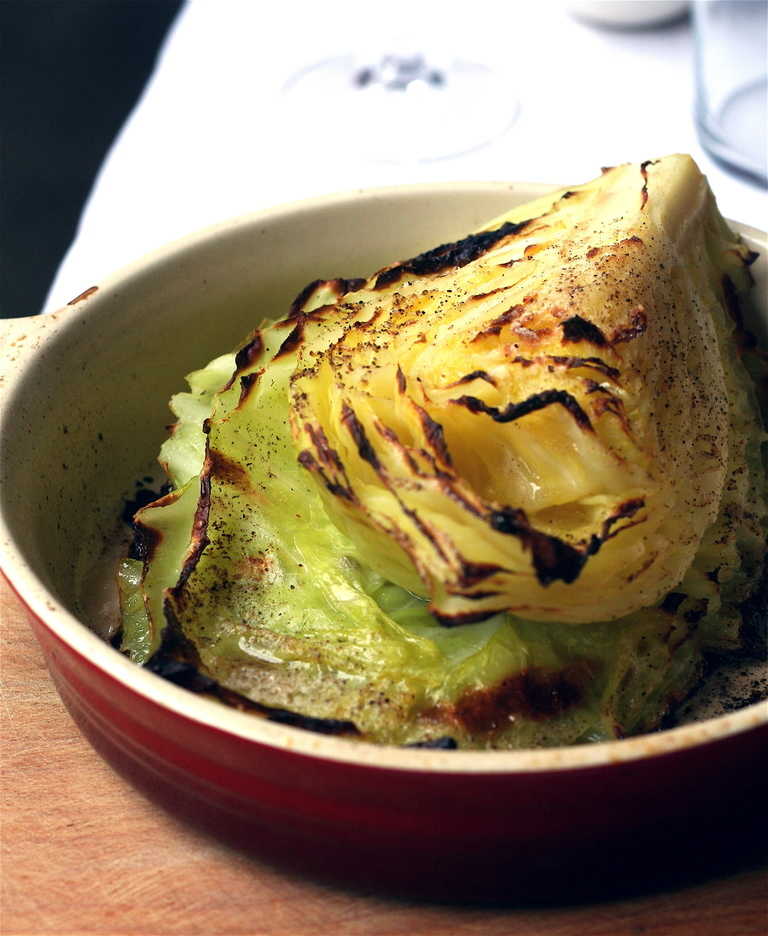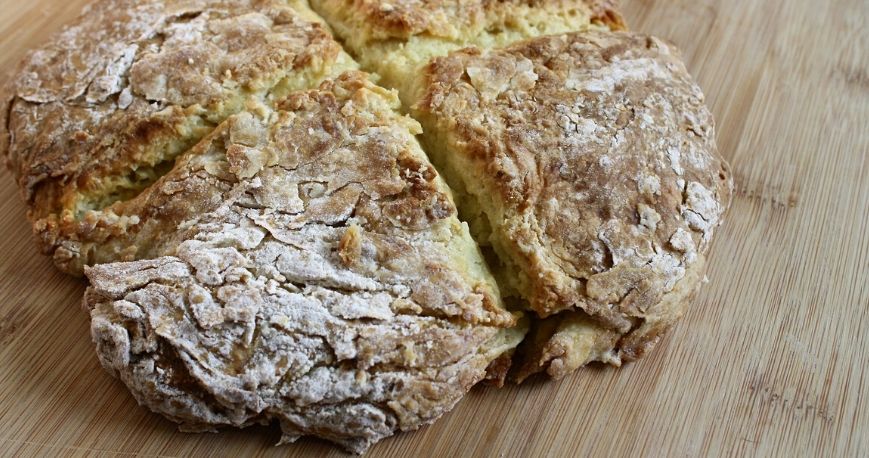Butter Baked Cabbage
- Cabbage (whole)
- Butter
- Salt & Pepper
- Star Anise (optional)
- New Potatoes (optional)
- Long Beans (optional)
Cabbage is wonderfully in season right now and this dish is simple and delicious.
First, let's talk about cabbage for a bit. Cabbages and other members of the brassica family contain defensive chemicals (enzymes and precursors) that combine in times of stress on the plant (cutting, cooking, being eaten etc.) to create bitter flavours and pungent aromas. This is the plant's way of protecting itself. These defensive glucosinolates are at their minimum in the cold and wet, which is why cabbages (and other brassicae like brussel sprouts) are at their mildest and sweetest during winter. Glucosinolates are more concentrated towards the centre of the vegetables in the fast growing areas and are highly water soluble, so boiling cut brassicae allow these to leech out, leaving them sweeter still.
So now that you know why I love winter cabbages so much, on to the dish...
This really couldn't be much simpler, or more delicious. Preheat a very hot oven (around 220C) and separately boiling some stock or water (I made this together with the Pan-European Bollito Misto in my other recipe, so I used the stock from the corned beef) at the same time the beef was cooking. Remove a minimal amount of the outer leaves and quarter the cabbage, leaving the core intact. Place as many quarters as you need in the stock and boil for 8 minutes or so. While this is going, melt some butter separately in a small saucepan.
After the cabbage is done, drain well and take out a baking dish (I prefer something rustic and ceramic for this). Pour in a small amount of the melted butter to coat the bottom and then place the drained quarters cut side up in the dish. Pour over the remainder of the melted butter and season very well with salt and pepper (you can leave the pepper until after baking, otherwise it may char). Transfer to the oven and bake for 25 minutes. The cabbage is very sweet and so the bottom and the upper parts should blacken and caramelise (these are the best parts). That's all there is to it.
I also make this together with roasted potatoes and beans. Halved new potatoes can be parboiled together with the cabbage, dressed with olive oil, seasoned and placed around the sides of the same large dish to cook together. Whole long beans can be tossed in a little butter and added for the last 10 minutes of roasting. Everything is ready together. Next time I make this I might even take a photo with the potatoes and beans and substitute it for the one that's up at the moment.
Yet another variation is for eating with roast pork. I love cabbage and pork generally, and the added sweetness of this variation works perfectly. The only difference to what has been done above is to add a single star anise to the water as you boil the cabbage. This simple addition changes the character of the dish substantially. Anise is flavoured by a chemical compound called trans anethole. This is a supremely sweet chemical (13 times chemically sweeter than sugar - so sweet in fact that we hardly recognise it as so un its undiluted form - chew a star anise and you'll see what I mean) that acts on the sulphide glucosinolates in the cabbage (also in onion) to create robust, sweet flavours. Adding the anise to the boiling cabbage may seem like not much at all, but it creates a delicious sweetness that teams wonderfully with roast pork.
Better eating through chemistry!


